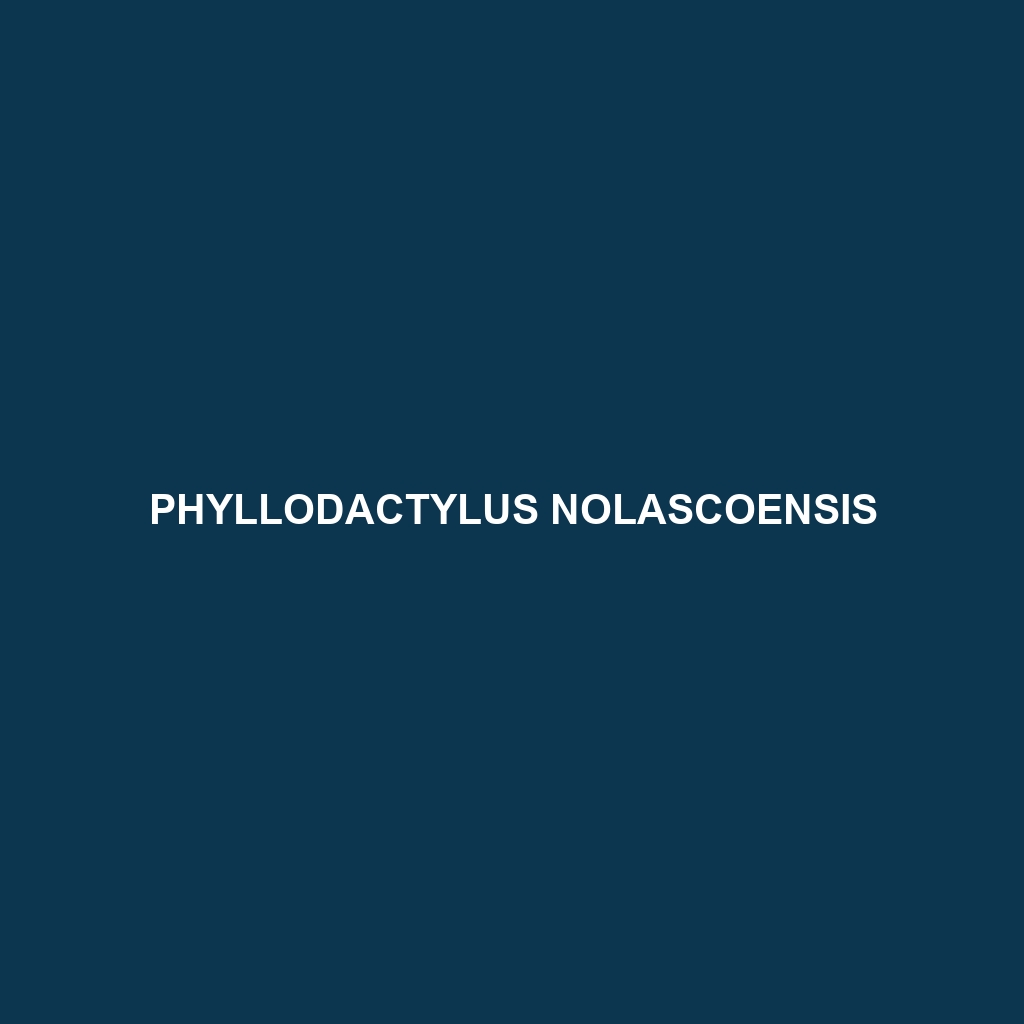Common Name
Phyllodactylus nolascoensis
Scientific Name
Phyllodactylus nolascoensis
Habitat
Phyllodactylus nolascoensis predominantly inhabits the arid to semi-arid regions of the Nolasco Island in the Gulf of California, Mexico. This unique species thrives in rocky environments, primarily displaying its presence in areas with sparse vegetation, such as desert-like terrains, coastal scrub, and other sun-drenched locales. The ecological conditions of Nolasco Island create a habitat characterized by warm temperatures, low humidity, and minimal rainfall, conditions that are typical of the coastal deserts. This gecko’s adaptability to such a niche setting demonstrates its resilience to environmental extremes.
Physical Characteristics
Phyllodactylus nolascoensis is a medium-sized gecko, measuring approximately 8 to 10 centimeters in length. This species is recognized for its slender body, which is particularly well adapted for navigating rocky surfaces. The coloration typically varies from brown to sandy hues, with subtle patterns of lighter and darker spots that provide effective camouflage among stones and sand. One of the most distinctive features of Phyllodactylus nolascoensis is its well-developed adhesive toe pads, which allow it to climb and cling to vertical surfaces effortlessly, a necessary adaptation for hunting and evading predators.
Behavior
Behaviorally, Phyllodactylus nolascoensis is predominantly nocturnal, engaging in most of its activities during the cooler night hours. This gecko demonstrates fascinating foraging behavior as it hunts insects and other small invertebrates. Social interactions are minimal; however, during the mating season, males engage in head-bobbing displays to attract females. The mating rituals of this species can be particularly intriguing, exhibiting various courtship behaviors that include tail waving and careful body posturing. Such unique nocturnal behavior and mating rituals make Phyllodactylus nolascoensis a subject of interest for herpetologists and reptile enthusiasts alike.
Diet
The diet of Phyllodactylus nolascoensis consists primarily of insects, positioning this gecko as an insectivore. Its diet typically includes crickets, beetles, and various other arthropods commonly found in its rocky habitat. The gecko employs its agility and camouflage to ambush prey effectively under the cover of darkness. Understanding the feeding patterns and prey preferences can provide insights into the overall health of its habitat and ecosystem.
Reproduction
Phyllodactylus nolascoensis exhibits a seasonal reproductive cycle, with mating commonly occurring during early spring. After a gestation period that lasts about 30 to 60 days, females lay clutches of one to three eggs in hidden crevices to protect them from predators. The young hatch after approximately two months, exhibiting independent behaviors almost immediately. Parental involvement typically ceases after the eggs are laid, with the hatchlings left to fend for themselves in their harsh environment.
Conservation Status
The conservation status of Phyllodactylus nolascoensis is currently classified as Least Concern according to the International Union for Conservation of Nature (IUCN). While not immediately threatened, the species is susceptible to habitat loss due to development and changes in land use. Conservation efforts focus on habitat preservation, ensuring that the unique ecosystems of Nolasco Island remain intact, which is crucial for the sustainability of this species and its ecological counterparts.
Interesting Facts
One fascinating aspect of Phyllodactylus nolascoensis is its remarkable ability to adapt to the fluctuating temperatures of its environment. This gecko can effectively regulate its body temperature through behavioral adjustments, often basking on warm rocks during the day and retreating to cool crevices as nighttime descends. Additionally, the ability of this species to regenerate its tail—an essential trait for evading predators—further adds to its resilience.
Role in Ecosystem
Phyllodactylus nolascoensis plays a valuable role in its ecosystem as both a predator and prey. As an insectivore, it helps regulate the population of insects, contributing to the ecological balance within its habitat. Furthermore, it serves as an important food source for larger predators, contributing to the food web of the island’s ecosystems. By maintaining populations of insects and serving within the local food chain, this gecko underlines its ecological significance.
